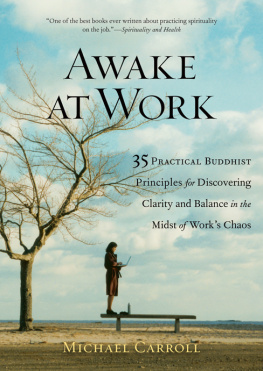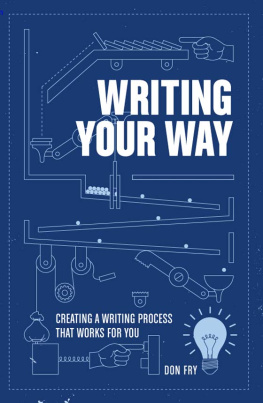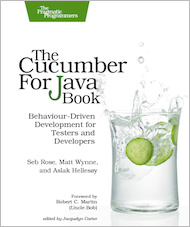Creating Clarity in Everyday Chaos
How to organize tasks and design a system that works
Emica Mao
Copyright 2020 Emica Mao
ISBN 9798685642387
All rights reserved
No part of this book may be reproduced, or stored in a retrieval system, or transmitted in any form or by any means, electronic, mechanical, photocopying, recording, or otherwise, without express written permission of the author and publisher.
Contents
Preface
Do you occasionally forget to do tasks or miss out on deadlines?
Do you sometimes lie awake at night with nagging thoughts that you were supposed to do something important but cant quite figure out what it is?
Do you feel swamped with tasks, obligations and errands that seem to never end? After accomplishing 3 tasks, there are 5 new ones. After attending back-to-back meetings, you get 2 new calendar invites, 3 missed calls and 12 new messages. After paying some bills last week, there are 2 more bills to pay this week. After going out to do some errands, there are 3 more you need to do this coming weekend.
These are just small slices of everyday chaos. They are my everyday chaos too.
At work, I help manage a portfolio of companies which require me to keep track of numerous things from helping founders set up companies to monitoring their progress all year-round. Outside of work, I co-oversee a business with a friend, pursue personal goals and manage my own household. Its an endless stream of incoming tasks, obligations and errands.
Over the years, I have tried using several productivity apps, but almost always, I would find myself using less and less of an application for various reasons too time-consuming to update, too complicated to use, or the application got terminated.
Since nothing perfectly worked for me, I started designing my own systems using the classic tools of checklists, to-do lists and logs, and theyve tremendously helped me get my life in order.
Who may learn from this book?
- newbies in organizing tasks
- those who want to have a refresher on creating checklists, to-do lists and logs of important details so it's easier to recall and retrieve information when needed;
- those who have been organizing to-dos for years but have not found the right system that works for them;
- those who want to minimize recurring lapses and oversights; and
- those who want to organize their life better.
If you already have a system that works for you, no need to read this book. Stick to what already works for you. However, if you still occasionally forget tasks and miss deadlines, it may be worth trying some of the ideas here and see if they will work for you too.
The book is divided into three parts because if you slice and dice all the things we need to do and keep track of on a regular basis, they essentially fall into three buckets:
Tasks that recur or repeat;
Tasks that you need to do one-time; and
Information you need to recall or retrieve.
Thus, each part of the book tackles the three areas above with practical applications on how to use them at home, at work and in various areas of your life.
If you need help only on certain areas, you may read just the relevant sections. For example, if you dont have a lot of recurring tasks and obligations, and most of your tasks are just one-time, you may skip Part 1 and go straight to Part 2.
As you read the book, its also important to keep in mind that we all have different needs, professions, personal styles and varying levels of obsessive-compulsiveness, thus, organizing ones life is not a one-size-fits-all solution.
Though the solutions and tools we use may be similar, at the end of the day, you need to design your own system (e.g. the way you arrange your tasks or the amount of details you put in) to suit your own situation and unique style. For example, there are people who thrive in great detail, while others get easily overwhelmed by it. Or there are people who prefer to keep their to-dos in digital format, while others prefer to write them down on paper. There is no right or wrong - it ultimately depends on what works for you.
As a final word, let me just say that a cup of coffee (as shown in the book cover) is usually our daily fix for boosting our clarity in the morning, however, that's just a temporary boost. Its organizing our lifes demands and details that would give us sustained clarity throughout the day, every day.
Emica Mao
Part 1 - Recurring Tasks
H ave you ever found yourself in any of these situations?
- You missed to pay a bill on time even if you've been paying the same bill every month.
- You realized that you have not visited your dentist for a long time. You couldnt even remember when was the last time you did.
- You cant recall when was the last time you had your air-con filters cleaned. Was it 6 months ago? 1 year ago? 2 years ago?
- Youre in the airport, your mobile phones battery is running low and you realized that you forgot to bring a charger.
- Your computer crashed and youre stunned when you realize that you haven't backed up your computer files for years.
I know because Ive been there - not just once or twice, but several times. But even if I kept forgetting or missing things occasionally, I just coasted along blindly and accepted it as normal because people around me also forget things. Besides, if ones mind is swamped with a lot of things, how can you expect someone to remember everything, right? For years, thats what I wanted to believe in until one wake-up call.
It was my annual vacation trip. Since my work schedule was toxic, I only ended packing the same morning as my departure. I was about to leave for the airport when I thought of checking my stash of leftover bills from past trips. When I checked the box where I store my travel-related stuff, I froze. My passport was still inside the box!
In short, if I have never thought of looking for leftover bills from my past trips, I would have totally forgotten my passport. Such a horrifying thought because I had non-rebookable tickets and the airport was an hour away from where I live, so there was no way I could have retrieved my passport from home and still catch my flight had I forgotten my passport. Its no big deal if you forget to pack an item like a phone charger because you could always buy (or borrow) one, but not when its your passport.
Because of this nerve-racking experience on what could have happened for forgetting one item (which happens to be the single most important item to bring), I could not accept that its only human to forget - particularly to forget things that can be anticipated, or forget tasks that we do repeatedly. And so, I started creating checklists.
My first batch of checklists were for travel purposes because of my alarming experience. Later on, I created checklists for minor but more frequent activities, then for household chores and errands, and finally for work tasks. Its been 15 years since that passport incident and so far, Ive never had any major mishaps due to forgetting something.
The checklist method works because:
- It saves you a lot of time. You dont have to rack your brain on what to bring or what you need to do each and every time; and
- It gives you peace of mind knowing that the essential things you need to bring (or you need to do) have already been pre-identified. There are no nagging thoughts and mental chatter of self-doubt running through your head if you might have missed to bring or do something.
Checklists for Home and Personal Tasks










